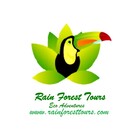|
They say that all you need in life is a great friend and a thirst for adventure. Traveling with friends, says Elizabeth Lombardo, PhD, author of A Happy You: Your Ultimate Prescription for Happiness, is a great way to focus on the “joy of camaraderie and increases a sense of fulfillment, confidence and resiliency.” For travelers looking to strengthen their bonds or spend quality time with their pals, Costa Rica is a destination brimming with opportunities for adventure, culture and relaxation.
Friends who travel together stay together. Those in search of cultural and natural attractions will find both in the Central Valley region. The country’s capital, San Jose, is home to many of Costa Rica’s most popular museums including the Gold Museum, Jade Museum, National Museum and the architectural jewel of Costa Rica, the National Theater. Surrounded by beautiful mountains, volcanoes and cloud forests friends can take a day trip to explore what Central Valley has to offer. The area offers numerous coffee estates, dairy farms, as well as sugarcane mills all waiting to be explored. To go fast, go alone. To go far, go together. Those looking to enjoy the “Pura Vida” life at a more relaxed pace can head to the Limon Province in Costa Rica’s Caribbean coast. The area, which is also known for its rich Afro-Caribbean culture, attracts anglers, naturists and water enthusiasts in search of unique experiences. Friends can head out bass fishing, embark on a fascinating excursion through the area’s interconnected canals or have the opportunity to witness green turtles nesting during the months of July through October at Tortuguero National Park. The area also provides visitors with the opportunity to enjoy some of Costa Rica’s best beaches and picturesque parks, which are complemented by the areas inviting culture. A wide range of activities allow traveling buddies to mix adventure with natural history, present day culture, gastronomy and music. Life was meant for good friends and great voyages. The combination of breathtaking white-sand beaches, sweeping mountain views and ideal tropical climate has made Guanacaste one of Costa Rica’s most popular regions. Located in the northwestern corner of the country, the area presents a diverse geography, active nightlife and boasts many of Costa Rica’s most popular beaches, including those found at Playas del Coco, Tamarindo and the Papagayo Peninsula. Friends can enjoy everything from snorkeling, zip lining, hiking and more. Travelers can also visit an active volcano with natural hot springs, fumaroles and majestic waterfalls at Rincon de la Vieja National Park, or visit the Nicoya Peninsula for world-class surfing, quaint towns and wonderful nature reserves. Good friends dream of adventure. Best friends go on them together. High up in the mountains of La Fortuna, travelers have the opportunity to experience ecological tourism in a natural and picturesque environment. Visitors can set out on adventures like zip-lining, a mountain water slide, horseback riding, thermal springs and more. Guests also have access to natural hot springs, scenic trails, pristine waterfalls, bubbling volcanic mud pools and more. Visitors to the region may also enjoy exploring the inlets and mangrove swamps of the south side of the region and marvel at the arrival of the Ridley sea turtles at the Ostional Wildlife National Refuge or discover Barra Honda National Park, home to Costa Rica’s only underground caves. From mountain ranges and rain forests to breathtaking beaches and cloud forests, Costa Rica’s diversity of landscapes, climates and natural wonders provide friends with unlimited experiences to bond, enjoy thrilling activities together and make memories to last a lifetime.
0 Comments
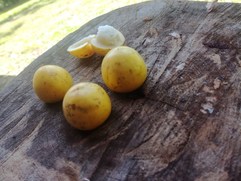 Roadside fruit stands are a delightful culinary experience not to be missed while traveling through Costa Rica. The country’s tropical climate and fertile volcanic soil create excellent conditions for a wide range of fruits to flourish. Although travelers may be familiar with fruits such as mango, papaya, pineapple, bananas, and coconut, Costa Rica offers a wide variety of nutritious and tasty tropical fruits, which stand out for their freshness and exotic flavor. Below are the top five must-try delicacies no traveler should miss on their next trip: Nance The Nance is a small yellow berry with delicate skin and a white pulp. It grows in clusters, which acquire a penetrating aroma. They are sweet and slightly bitter. The tree can be found in Costa Rica’s dry forests, savannas and coastal areas, such as Alajuela, Puntarenas, and Guanacaste. Nance fruit is often used to prepare beverages, craft liquors, ice cream and desserts. It is a rich source of vitamin C and fiber. Guaba In Costa Rica, Guaba is synonymous with luck. When someone is particularly lucky, they are called “Guabero”. Not to be confused with guava, the Guaba tree can measure up to 50 feet high and produces beautiful flowers. The fruit pods vary in size and shape, but have a woody bark that contains black seeds covered in a white cottony layer of delicate sweet flavor. Due to its flavor and texture, it is also known as the “ice cream bean.” Guabas are usually available during the rainy season and are often used as an ingredient in salads and ice cream. Its seeds are often used to create jewelry, usually necklaces or earrings, which can be found in craft markets throughout Costa Rica. This fruit is rich in vitamin C, fiber and other micronutrients. Cas Cas is a small round green fruit that can be found throughout Costa Rica. The skin is thin and the pulp is fleshy and juicy. Cas juice, which is made with ripe Cas, is tart—somewhat similar to lime or lemonade, but has its own unique flavor. It is a Costa Rican staple during mealtime. Cas is available throughout the year, but is most common from November to August. This fruit is rich in vitamin C, vitamin A, fiber and potassium. It is also used to make ice-cream. Mamón chino Mamón Chino is an exquisite round fruit covered in an intensely bright red skin, which is protected with soft thorns. The trees grow in clusters and can reach up to 65 feet in height. Mamón Chino is typically found in the southern regions of Costa Rica, where small and large producers, especially from the Corredores area, produce high quality fruit. The sweet and juicy pulp is consumed fresh, and is the ideal ingredient for the preparation of desserts, salads and drinks. Mamón Chino is a rich source of vitamin C, potassium, fiber, vitamin A and other beneficial components for health. Pitahaya Pitahaya belongs to the cactus family, is native to Mesoamerica and is also known as dragon fruit. The plant grows in dry stony areas, and is resistant to drought. In Costa Rica, it is found in tropical dry forests—mainly north of Puntarenas and Guanacaste. It is also possible to find the plant in some dry areas of the Central Valley. The Pitahaya fruit is oval-shaped with a bright pink and scaly surface. The pulp is soft and translucent, with multiple tiny black seeds—similar to that of grapes. The fresh pulp is a common ingredient in desserts, drinks, salads and ice cream. On the Costa Rican Colón, the Pitahaya appears as a symbol of the country’s natural heritage. This fruit is rich in vitamin C, iron, phosphorus, potassium and fiber; it is also a rich source of antioxidants. But these are just a few of the many delicious fruits found in Costa Rica, the Guayaba, for instance, is similar to Cas in appearance but they are bigger in size and they are firm, they can be enjoyed by itself or can be used in juice, it is also used to make delicious jelly and jam. Guanabana known as soursop is also widely found in Costa Rica and because of its creamy texture it is used specially for fresh juices and in ice cream. Manzana de agua (water apple) or Malay apple is an exquisite fruit that is easy to find during the summer months in Costa Rica, many people eat it with salt, while others prefer it alone or use it to make juice. The Caimito or “Star apple” is also commonly found in the farmer markets, it is purple and round, it has a sweet flavor with milky juices inside, it is said to have a lot of anti-oxidant properties. Last but not least, the Jocote are easily found in Costa Rica particularly during the summer time, the small fruit can be enjoyed unripe when their taste is more tart (add salt to it) or ripe when they are juicy and sweet. |
Arturo & Nereyda
Costa Rica Travel Experts Archives
March 2024
Categories |
Rain Forest Tours Costa Rica travel experts, since 1995, Vacations packages, Hotels, Tours, Transportation, Rainforest Travel Expert Official Website
- Home
-
Packages
- Adventure Challenge Package
- Adventures in Style
- Caribbean Rafting and Beach Package
- Costa Rica Select Explorer Package
- Costa Rica Wildlife Immersion
- Cloud Forest Adventure Package
- Pura Vida Adventure Package
- Highlights of Costa Rica Deluxe
- Rainforest Deluxe Adventure
- Rain Forest Adventure Package
- Select Nature Lover's Delight
- Costa Rica Tropical Paradise Package
- Costa Rica Rain Forest Adventure Package
- Jewels of Costa Rica 8 days Package
- VIP Special Itineraries
- Thanksgiving Costa Rica All INCLUSIVE Packages
- Costa Rica New Year 7 NIGHTS - All INCLUSIVE
- Costa Rica New Year 5 NIGHTS - All INCLUSIVE
- Costa Rica Honeymoon Itineraries
- Costa Rica Yoga & Wellness Retreat Packages
- Costa Rica Vacation's Packages
- Day Tours
-
Regions
- Contact Us
- About Us
- Guest Stories
|
We thank you for your service so please ask for our Veteran Discounts
|
|
|
Design by Rain Forest Tours Group
|
Managed by Voyager Websites
|
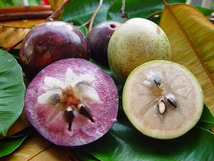
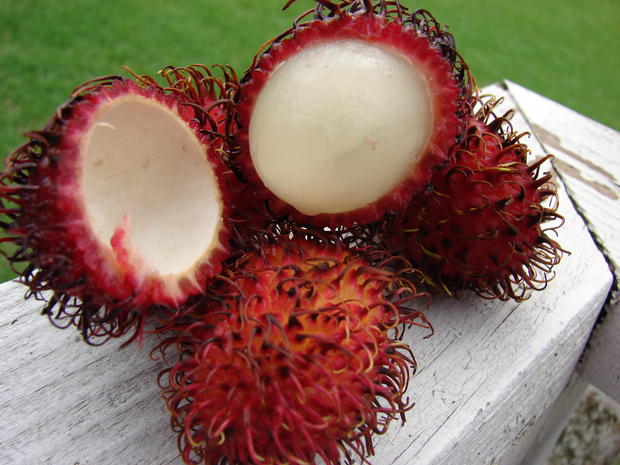
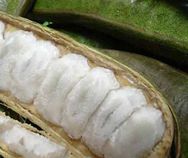
 RSS Feed
RSS Feed

